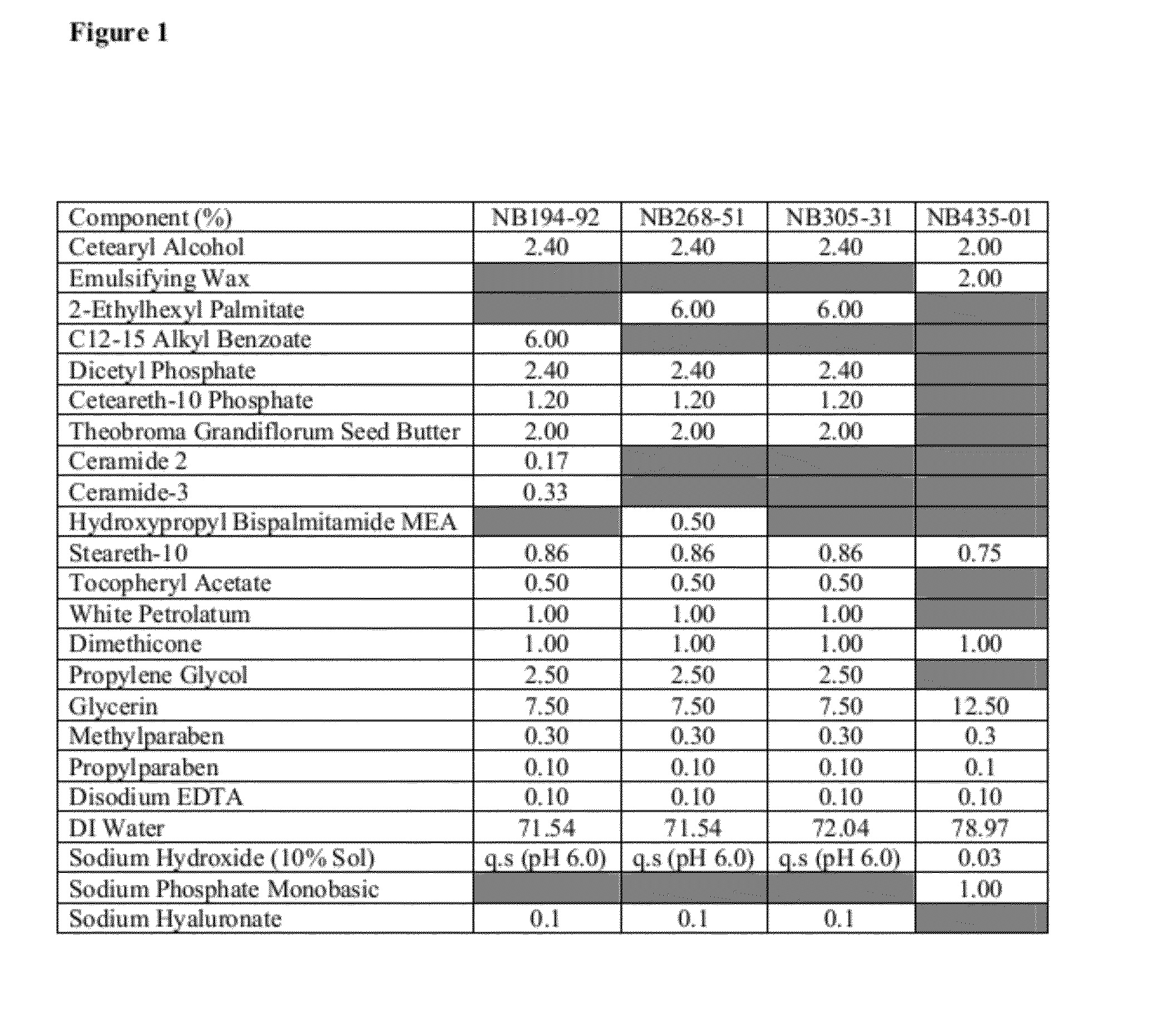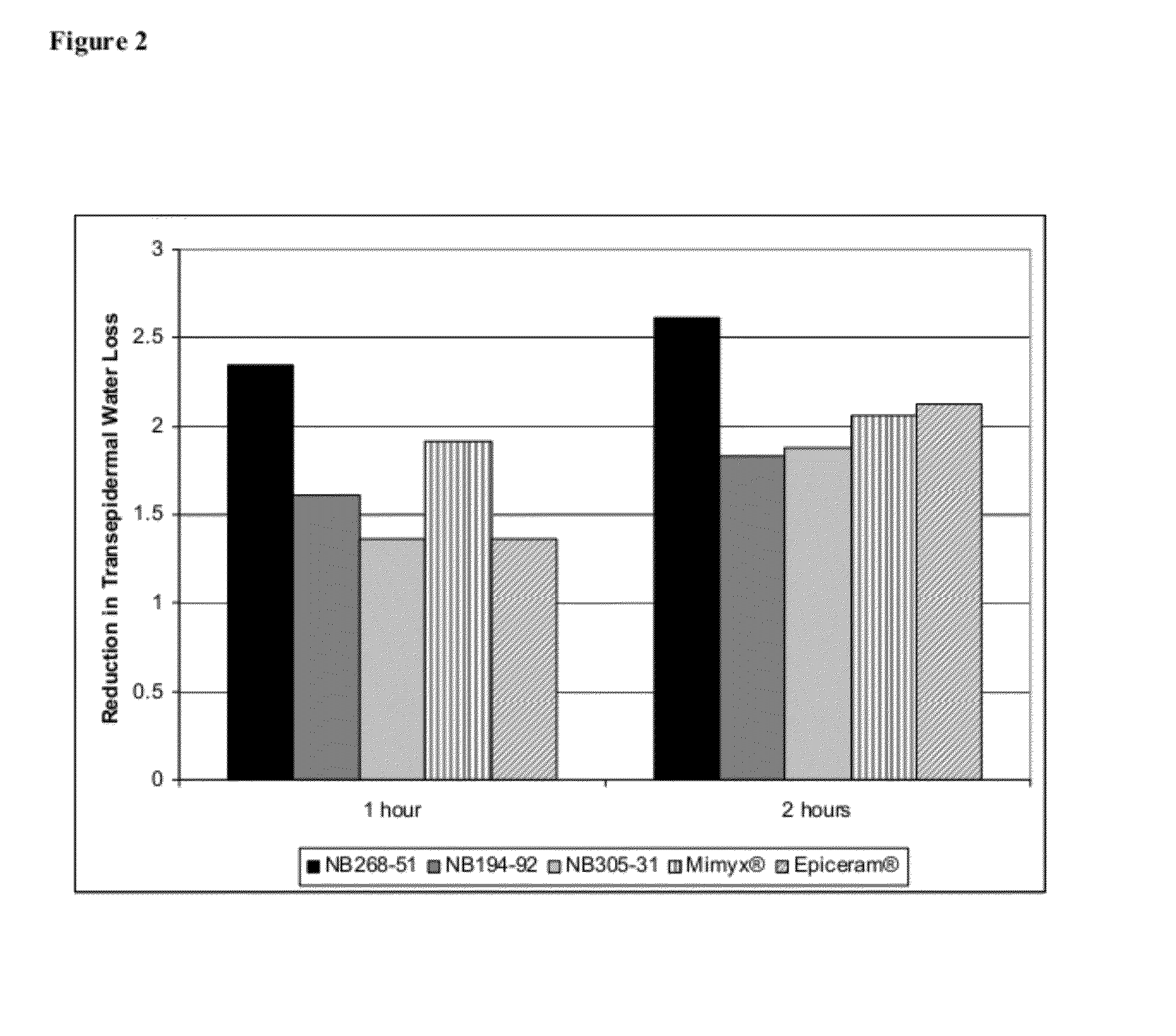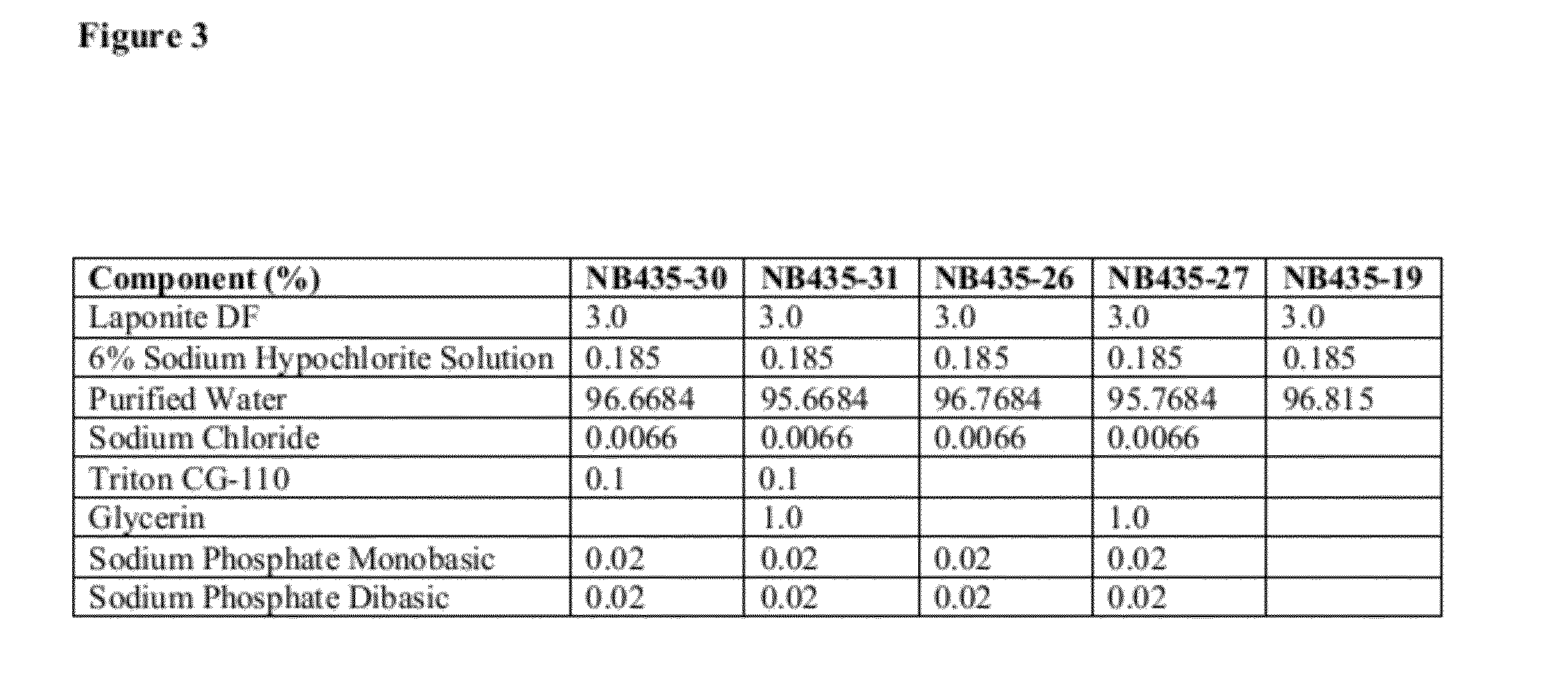Tandem Hypochlorite-Barrier Repair Therapy for the Treatment of Eczema
a technology of eczema and hypochlorite barrier, which is applied in the field of eczema tandem hypochlorite barrier repair therapy, can solve the problems of coal tar irritating already inflamed skin, not helping, and atopic patients being more prone to irritant contact dermatitis
- Summary
- Abstract
- Description
- Claims
- Application Information
AI Technical Summary
Benefits of technology
Problems solved by technology
Method used
Image
Examples
example 1
Barrier Repair Compositions
[0815]In one embodiment, the barrier repair compositions are commercially available creams, lotions, sprays, gels, foams or ointments. Examples of commercially available barrier repair compositions include:
[0816]1. Atopiclair produced by Graceway Pharmaceuticals
[0817]2. Biafine produced by Ortho Dermatologics
[0818]3. Eletone produced by Ferndale Laboratories
[0819]4. Epiceram produced by Promius Pharma
[0820]5. Hylira produced by Hawthorn Pharmaceuticals
[0821]6. Mimyx produced by Stiefel Laboratories
[0822]7. Tetrix produced by Valeant Pharmaceuticals
[0823]8. Neosalus produced by Quinnova Pharmaceuticals
[0824]9. Hylatopic produced by Onset Therapeutics
[0825]10. Zenieva produced by Rivers Edge Pharmaceuticals
[0826]11. Prumyx produced by Prugen Pharmaceuticals
[0827]12. Pruvel produced by Prugen Pharmaceuticals
[0828]In one embodiment, the barrier repair composition is a drug-free topical cream, lotion, or aerosol foam. Various embodiments of barrier repair emuls...
example 2
Change in Transepidermal Water Loss
[0848]The TEWL value is a measure of the rate of water lost through the skin (g / h·m2) and is an estimate of the skin's ability to retain moisture. It is an index of the extent of possible damage of the skin's water-barrier function. Because water loss through the skin normally occurs by passive diffusion through the epidermis, higher TEWL values indicate greater water loss and are consistent with increased damage of the barrier function of the stratum corneum such as may occur from atopic dermatitis.
[0849]The measurement of the water evaporation is based on the diffusion principle in an open chamber
dw / dt=−D×A×dp / dm
where: A=surface area (m2), w=water transported (g), t=time (h), D=diffusion constant (=0.0877 g / m·h·mm Hg), p=vapor pressure of the atmosphere (mm Hg) and m=distance from skin surface to point of measurement.
Study Materials and Instrumentation
[0850]Tewameter® TM 300 (Courage and Khazaka) Serial Number: 05264788
[0851]Scotch® Tape
[0852]Ki...
example 3
Topical Bleach Compositions
[0864]Various bleach compositions were prepared as follows (FIG. 3):[0865]1. Added DI Water, Glycerin, Sodium Phosphate Monobasic, Sodium Phosphate Dibasic, and Sodium Chloride into a SS or Glass Container and mixed for 5 minutes using a prop mixer.[0866]2. Added 6% Sodium Hypochlorite and mixed for 5 minutes using a prop mixer.[0867]3. Began homogenizing with the Silverson. While homogenizing, added the Laponite DF very slowly (powdered in). Took care to add at an addition rate which avoided clumping and accumulation on the sides of the container.[0868]4. After all Laponite DF had been added, homogenized using the Silverson for 10 minutes at speed 6 to efficiently disperse the clay.[0869]5. Removed from Silverson and mixed for 10 minutes using the prop mixer.[0870]6. Added Triton CG-110 slowly with mild mixing. Mixed for an additional 10 minutes.[0871]7. Q.S. with DI water to 750 g. Mixed with prop mixer until uniform.[0872]8. Transferred entire contents ...
PUM
 Login to View More
Login to View More Abstract
Description
Claims
Application Information
 Login to View More
Login to View More - R&D
- Intellectual Property
- Life Sciences
- Materials
- Tech Scout
- Unparalleled Data Quality
- Higher Quality Content
- 60% Fewer Hallucinations
Browse by: Latest US Patents, China's latest patents, Technical Efficacy Thesaurus, Application Domain, Technology Topic, Popular Technical Reports.
© 2025 PatSnap. All rights reserved.Legal|Privacy policy|Modern Slavery Act Transparency Statement|Sitemap|About US| Contact US: help@patsnap.com



